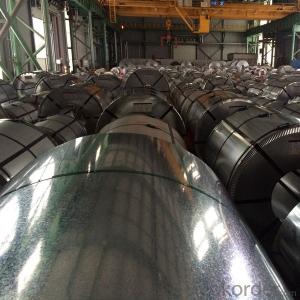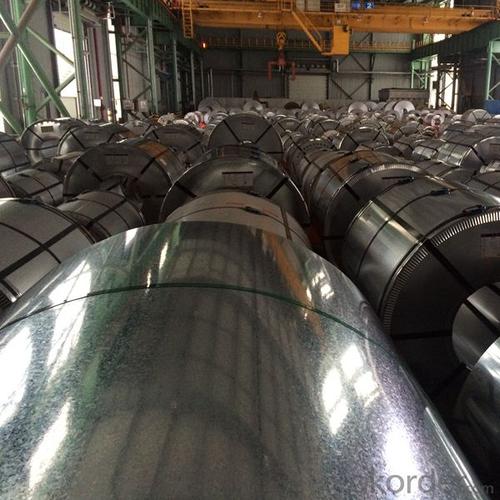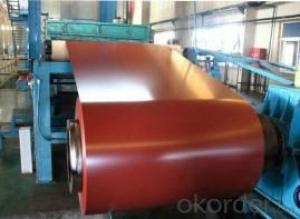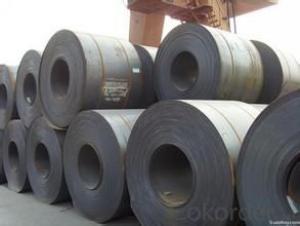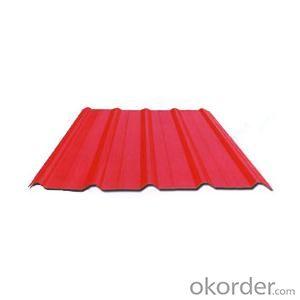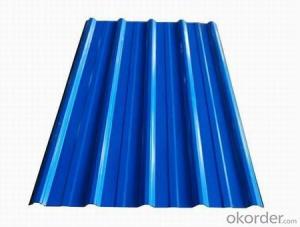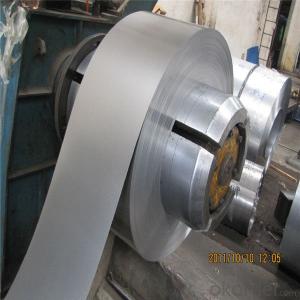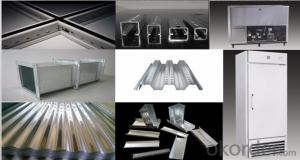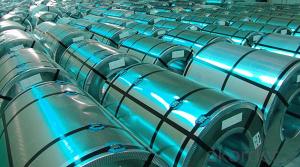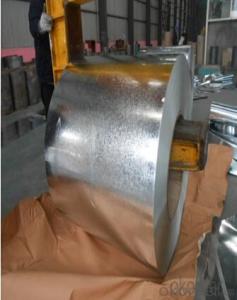Galvanized Steel Coil For Roofing Sheet Regular Spangle Competitive Price
- Loading Port:
- Tianjin
- Payment Terms:
- TT OR LC
- Min Order Qty:
- 50 m.t.
- Supply Capability:
- 100000 m.t./month
OKorder Service Pledge
OKorder Financial Service
You Might Also Like
Specification
DESCRIPTION FOR GALVANIZED STEEL COILS:
1) Size: 0.30-2.0mm x 1,000-1,500mm x C
2) Zinc coating: 80-275g/m2;
3) Spangle: regular, zero and minimized
4) Material: we can supply different qualities according to several standards,
such as:
a) SGCC, SGCD, SGCE according to JIS G3302
b) DX51D+Z, DX52D+Z, DX53D+Z, DX54D+Z to EN 10142
EXPORT STANDARD FOR GALVANIZED STEEL COILS:
-Axial and circumferential steel straps with seal (4 steel straps each)
-VCI Anti-rust kraft paper
-Water-proofing plastic
-Pearl wool (coil surface)
-Steel cover (coil surface/bore)
-Plastic cover (coil sides)
-Inside and outside corner protectors
Or According customers' requirements(Usually only for domestic)
RAW MATERIALS FOR GALVANIZED STEEL COILS:
(1)Hot dipped galvanized steel sheet
(2)color coated galvanized steel sheet
(3)Galvalume steel sheet
(4)Prepainted galvalume steel sheet
(5)Aluminum sheet
(6) Prepainted aluminum sheet
(7)Stainless steel sheet
PACKAGING &DELIVERY FOR GALVANIZED STEEL COILS:
Packaging Detail Standard export packing or following customer's demand
Delivery Time: Within 30-40 days after deposit or according to the order quantity
TRADE TERMS FOR GALVANIZED STEEL COILS:FOB, CFR, CIF
DETAILED PICTURES FOR GALVANIZED STEEL COILS:
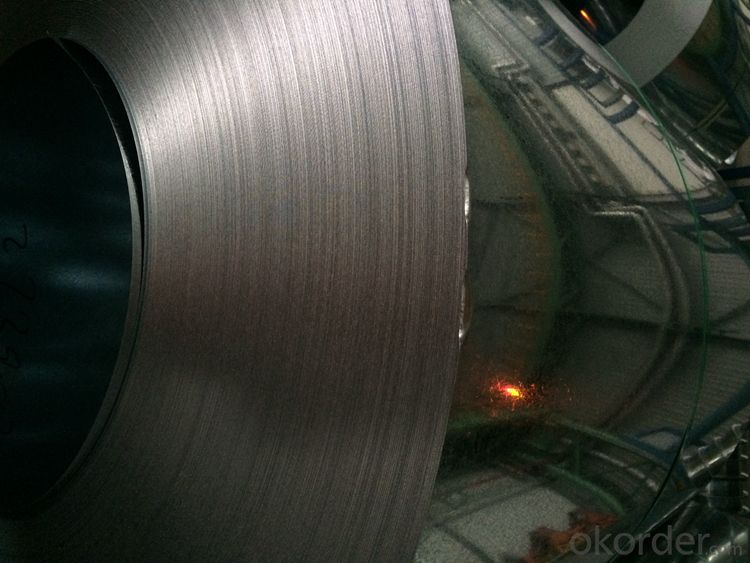
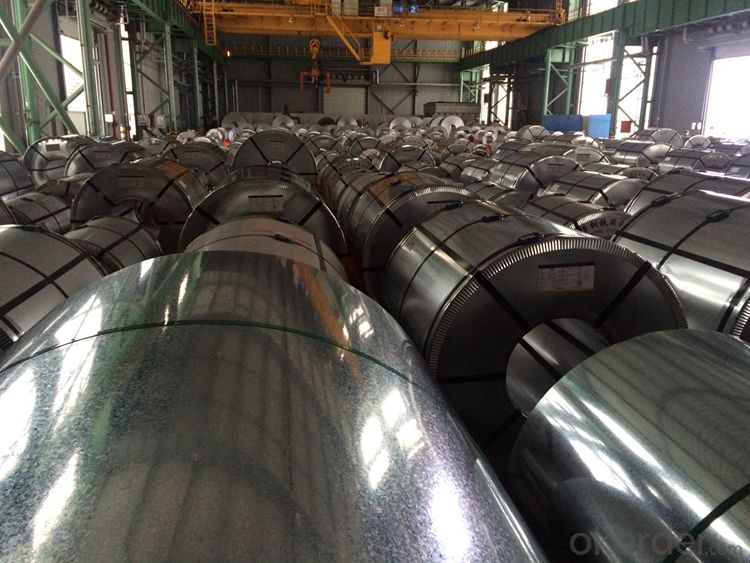
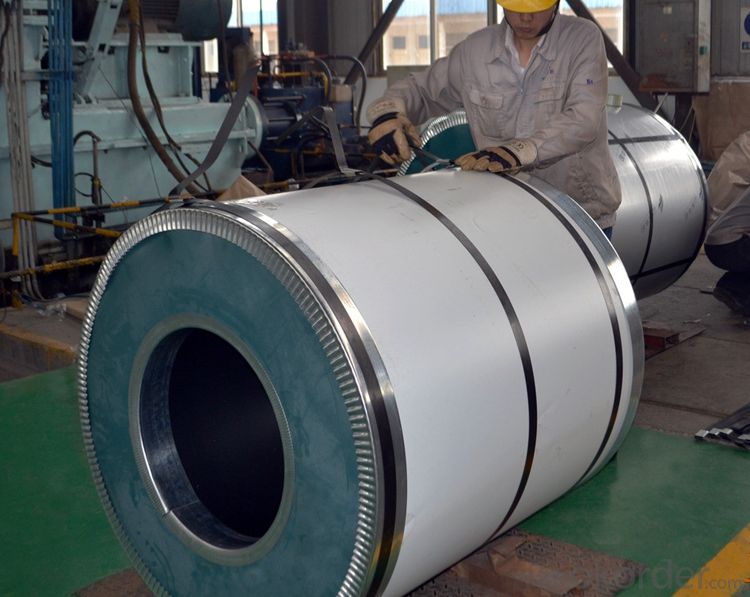
APPLICATION FOR GALVANIZED STEEL COILS:
Guardrails, ventilation ducts, gutters and down spouts, Pre-paint and post paint applications, gutters and ceiling suspension bars, shutter door rails. Auto parts, electrical appliances, refrigerator appliances, signs, automotive parts,vending machines, washing machines, showcases and other structural use, roofing, commercial use.
FAQ FOR GALVANIZED STEEL COILS:
Q:How about the delivery time?
A:Within 15-30days after receiving the deposit or L/C at sight.
FAQ FOR GALVANIZED STEEL COILS:
Q:How about the trade terms?
A:EXW,FOB,CFR,CIF will be accepted.
- Q: I am in the market for a good hunting knife under $100. I am primarily looking for a knife that will keep it's edge. What type of steel should I be looking for?
- Don't know much about steels, but apparently SV30 is the toughest son of ore you can look for, and it's so tough I've heard of knife makers rejecting it for softer steel. Look for Gerber and Buck for low end SV30 knives under $100.
- Q: What products can we make with steel (eg Steel strip, rod, bar, rail, tube) How are these made? What can we make from these steel products?Can you please make the answers as detailed as possible you can because i really want to know this really well. Thank you.
- Your okorder (they make steel deck and steel joists) There are thousands of other items routinely produced from steel, including rebar, and all the metal in cars, airplanes, and about a million other things.
- Q: Hello, Do I make any damage to my stainless steel sink by cleaning it with clorox? Thank you!
- Thanks to Yahoo about a year ago, I have the perfect answer for you. Below is the recipe for Tub and Tile Cleaner that I copied off Yahoo and I would never go back to using other cleaners again. Ingredients: 2/3 Cup Baking Soda 1/2 Cup Liquid Soap such as dish soap ( I use Palmolive Anti-bacterial ) 1/2 Cup Water 2 Tablespoons White Vinegar Instructions: Whisk together baking soda, soap, and water until smooth and creamy. Add vinegar and let stand a few minutes to foam. Combine all ingredients until thoroughly blended. Store in an airtight container such as one that margarine comes in. Stir prior to using and it doesn't take very much of it either. Use for tubs, toilets, sinks, counter tops extra. This is an excellent cleaner and environmentally safe. Does a great job and your stainless steel sinks will sparkle! In addition to cleaning so well, white vinegar has anti - bacterial properties therefor, this cleaner also kills germs and your drains will smell fresh and clean also. Happy cleaning!
- Q: How are steel coils inspected for impact resistance using impact testers?
- Steel coils are inspected for impact resistance using impact testers, which are specially designed machines used to assess the ability of the steel coils to withstand impacts. The process involves subjecting the steel coils to controlled impacts and measuring the extent of deformation or damage caused by the impact. Firstly, the steel coils are securely placed on the impact tester, ensuring that they are in the correct position and orientation. The impact tester is equipped with a striking element, such as a pendulum or a falling weight, which is designed to deliver a specific amount of force upon impact. The striking element is carefully aligned with the steel coil to ensure accurate and consistent testing. Once everything is set up, the impact tester is activated, and the striking element is released to impact the steel coil. The force of the impact is carefully controlled and measured to ensure consistency across multiple tests. The impact tester records various parameters during the impact, including the force applied and the duration of the impact. After the impact, the steel coil is carefully examined for any visible deformation or damage. This can include checking for dents, cracks, or any other signs of structural compromise. The extent of the deformation or damage is recorded and compared to predetermined acceptance criteria to determine whether the steel coil passes or fails the impact resistance test. Impact testers can be equipped with various sensors and cameras to capture additional data during the testing process. High-speed cameras can be used to record the impact in slow motion, allowing for a detailed analysis of the coil's behavior during the impact. Strain gauges can be attached to the steel coil to measure the strain and stress experienced during the impact. Overall, the use of impact testers provides a reliable and standardized method for inspecting the impact resistance of steel coils. By subjecting the coils to controlled impacts and carefully measuring the extent of deformation or damage, manufacturers can ensure that their steel coils meet the required impact resistance standards for various applications.
- Q: What are the challenges faced during steel coil processing?
- Steel coil processing presents several challenges that can be encountered. One of the primary obstacles involves the proper handling of the heavy steel coils, which can weigh several tons. It is crucial to have the correct equipment and procedures in place to safely move and manipulate the coils. This necessitates the use of cranes, forklifts, or other strong lifting devices capable of handling the weight and size of the coils. Another challenge revolves around maintaining the integrity of the steel coils throughout the processing. These coils are vulnerable to damage from scratches, dents, or other physical deformations. To minimize the risk of damage, it is important to establish suitable storage and handling procedures. Moreover, caution must be exercised during cutting, slitting, or other processing operations to prevent any harm or compromise to the coils. Quality control presents another significant challenge in steel coil processing. Consistently producing coils that meet the required specifications, such as thickness, width, and surface quality, is essential. To achieve this, meticulous inspection and monitoring must be carried out throughout the entire processing chain, from the receipt of raw materials to the final product. Any deviations from the desired specifications can result in rejected coils or customer dissatisfaction. Efficiency and productivity also pose challenges in steel coil processing. It is imperative to optimize processing operations to minimize waste, reduce downtime, and maximize throughput. This can be achieved through the implementation of automation, improved production planning, and streamlined workflows. Additionally, striking a balance between production speed and maintaining quality standards is crucial for efficient and productive processing. Lastly, safety is a significant challenge in steel coil processing. The equipment and processes involved in the industry present various risks to workers, including accidents, injuries, or exposure to harmful substances. To ensure a safe working environment, it is vital to establish proper safety protocols, provide adequate employee training, and regularly inspect and maintain equipment. In conclusion, steel coil processing encompasses challenges such as handling heavy coils, maintaining their integrity, ensuring quality control, optimizing efficiency and productivity, and ensuring a safe working environment. By addressing these challenges, steel coil processors can achieve smooth operations and deliver high-quality products to their customers.
- Q: I'm just wondering what the best steel would be for an edc/hunting knife that could put up with alot of abuse.
- D2 and O2 steels are nice. They are expensive, but hold an edge extremely well. S30V is nice also. It's a more stain-resistant steel that holds an edge very well. For outdoor hiking/camping knives, it's tough to beat good old 1095 carbon steel. Sure it will rust, but it's tough as nails, not brittle, holds an edge pretty well, and easy to sharpen...and it's pretty cheap. Other steels, AUS8 is an ok cheap steel. It's stain resistant and cheap. AUS6 isn't worth the time or effort. Buck knives does an excellent job of heat treating 420 stainless to become very hard. Their knives are excellent considering 420 stainless is typically soft steel.
- Q: What are the applications of steel coils in the aerospace industry?
- The aerospace industry relies heavily on steel coils for various purposes. One important application is in the manufacturing of aircraft structures. Steel coils are commonly used to fabricate wing spars, fuselage frames, and landing gear, as they possess high strength and durability necessary to withstand heavy loads and extreme conditions. Another significant use of steel coils in the aerospace industry is in the production of engine components, specifically turbine blades. These blades experience high temperatures and rotational forces, making it crucial to utilize steel coils due to their excellent heat resistance and mechanical properties. This ensures the reliability and performance of aircraft engines. Steel coils also find utilization in the production of fasteners and connectors necessary for securely joining different parts of an aircraft. Bolts, nuts, and rivets made from steel coils are essential for maintaining the structural integrity and safety of the aircraft. These fasteners need to possess high tensile strength and corrosion resistance. Furthermore, steel coils are employed in the production of fuel tanks and hydraulic systems. The weldability and formability of steel allow for the efficient fabrication of these complex structures. Steel coils can be shaped into various sizes and configurations, providing flexibility in designing fuel tanks and hydraulic components that meet specific requirements. In conclusion, steel coils are indispensable in the aerospace industry. Their use in aircraft structures, engine components, fasteners, and fuel tanks highlights their versatility and reliability. The exceptional strength, durability, heat resistance, and formability of steel make it the preferred material for various aerospace applications, ultimately ensuring the safety and performance of aircraft.
- Q: How are steel coils used in the manufacturing of railway equipment?
- Steel coils are a crucial component in the manufacturing of railway equipment due to their strength, durability, and versatility. These coils are typically made from high-quality steel and are extensively used in various applications throughout the railway industry. One primary use of steel coils in the manufacturing of railway equipment is in the production of train tracks. Steel coils are rolled out and shaped into long, continuous rails that form the foundation of railway tracks. The strength and durability of these coils enable the tracks to withstand heavy loads, constant train traffic, and harsh weather conditions. Additionally, the uniformity and consistency of steel coils ensure smooth and safe train operations. Furthermore, steel coils are also used in the manufacturing of railway wagons and carriages. These coils are formed and shaped into various components such as the framework, body panels, and structural supports of the wagons. The robustness of steel coils ensures the structural integrity of the wagons, enabling them to carry heavy cargo and withstand the rigors of railway transportation. Moreover, steel coils are utilized in the fabrication of various railway equipment accessories, including couplings, brake systems, and suspension components. These coils are transformed into precise shapes and sizes to meet the specific requirements of each accessory. The strength and resilience of steel coils make them ideal for these critical parts, ensuring efficient and safe operation of the railway equipment. In summary, steel coils play a vital role in the manufacturing of railway equipment. Their strength, durability, and versatility make them an essential material for the construction of train tracks, wagons, carriages, and various accessories. The use of steel coils ensures the safety, reliability, and longevity of railway equipment, making them an integral part of the railway industry.
- Q: With the Reduced weight of steel,wouldn't the projectile be at a much higher velocity when fired causing more damage?I mean l couldn't steel be worked to seal the bore,not damage the rifling and still cheap enough to mass produce,and be light enough to carry much more ammo.
- Well trying to force that down a rifled barrel would be a funny trick. Please have a friend or two there to record it so they can put the blowing up of your rifle on youtube so people can learn what happens when idiots try stupid things. I'd say you should but you'll likely be dead or in hospital from the injuries. To expand your knowledge: Until you get to NIJ class 3 body armor any lead core high velocity bullet of FMJ form will go through like it's not even there. Oh pretty much anything with soft point ammunition at over 2,000fps velocity will go through with devastating effect. So lets see .. oh yes time to ban the .30-30 Winchester for civilian use. All the typical rifle caliber ammunition designated by the military as armor piercing has a copper alloy jacket around either a hardened steel core or more commonly a lead core with a hardened steel or tungsten alloy penetrator centered in that.
- Q: What are the different methods of edge trimming for steel coils?
- There are several different methods of edge trimming for steel coils, including slitting, shearing, and laser cutting. Slitting involves cutting the coil into narrower strips using circular blades. Shearing involves cutting the edges of the coil using a straight blade. Laser cutting uses a high-powered laser to precisely trim the edges of the coil.
Send your message to us
Galvanized Steel Coil For Roofing Sheet Regular Spangle Competitive Price
- Loading Port:
- Tianjin
- Payment Terms:
- TT OR LC
- Min Order Qty:
- 50 m.t.
- Supply Capability:
- 100000 m.t./month
OKorder Service Pledge
OKorder Financial Service
Similar products
Hot products
Hot Searches
Related keywords
